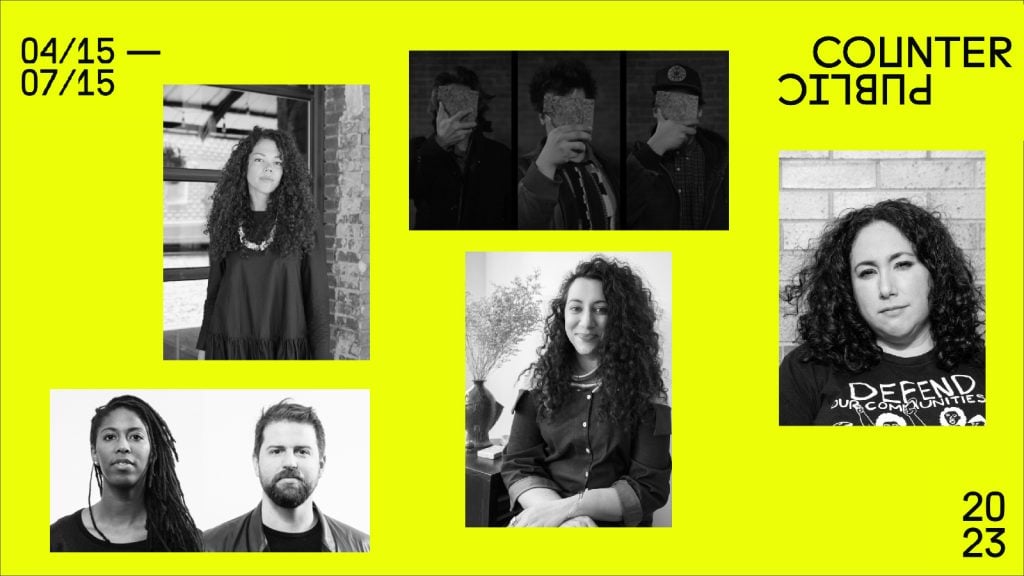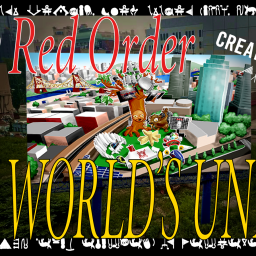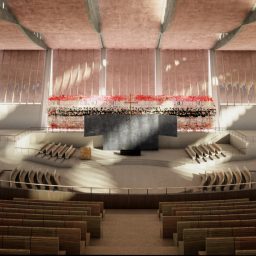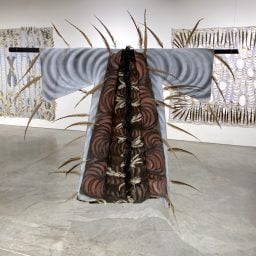Nine months ago, in an Op-Ed published on this site, curator James McAnally wondered if “outside the churn of the contemporary art world… could the slow build and release of the triennial offer a more humane pace?”
McAnally, the executive and artistic director of the Counterpublic triennial in St. Louis, was thinking about the time needed for a cyclical event like his to incur meaningful change in the communities it serves. It’s an increasingly salient question facing many regional bi- or triennials as they attempt a difficult balance between local-level engagement and national, or even international, scope.
The question is still on McAnally’s mind as he and others prepare for Counterpublic’s next edition, the second since its founding in 2019, which runs from May 15 to August 15, 2023. (The show was delayed a year because of the pandemic.)
Bringing together 28 artists and collectives, plus a handful of guest curators, the three-month show will focus “on public memory and reparative futures—how history is told, held, and healed, and how the future can be collectively envisioned towards new liberated lifeways,” according to project organizers.
“The invitation for the curators, for our community engagement team, and now for the artists, has always been to think along a different scale of time,” McAnally told Artnet News. “The invitation was to think ancestrally: What have we inherited? What are we leaving behind?”
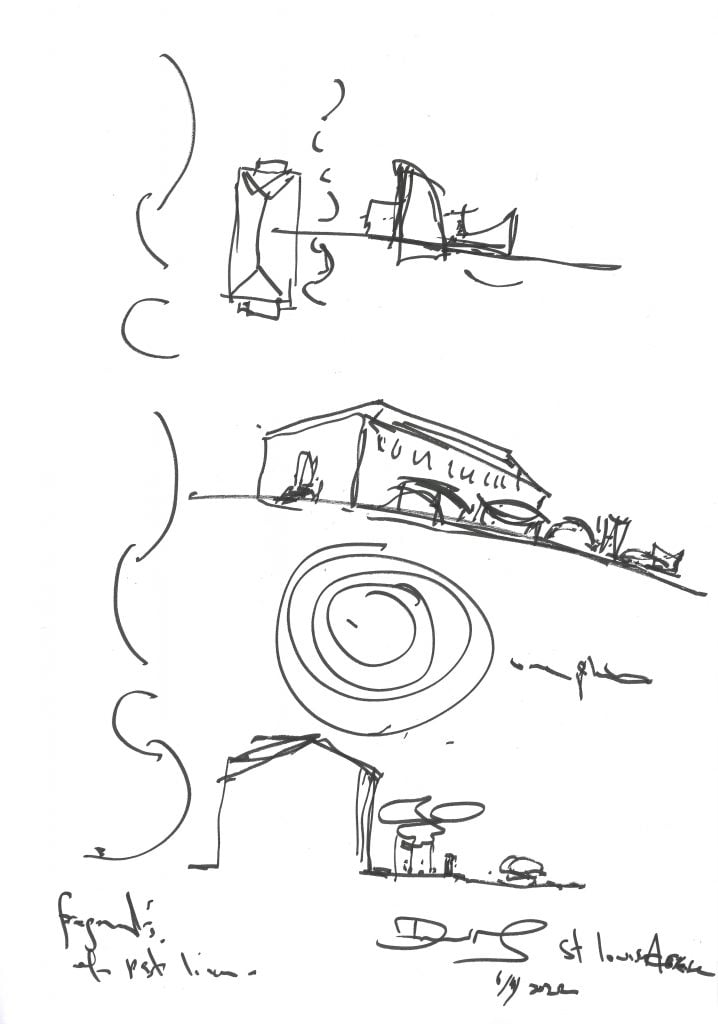
A preparatory sketch for David Adjaye’s planned Counterpublic installation. Courtesy of the artist.
As for the latter question: quite a bit, it seems. Among the 30 commissioned installations planned for the exhibition, four will be site-specific and permanent.
Most notable among these is a monumental earthwork conceived by architect David Adjaye to be installed at the Griot Museum of Black History. The piece will be erected from materials related to the demolished Pruitt-Igoe apartments, built in St. Louis in the 1950s as a racially segregated housing project. Elsewhere, St. Louis-based artist Damon Davis will erect a mile-long monument to Mill Creek Valley, a historically Black enclave displaced by a city-sponsored urban renewal project in ’50s.
Other projects will be more ephemeral. For her part, 82-year-old artist Jaune Quick-to-See Smith will develop a new map of St. Louis radiating from the city’s oldest remaining burial mound. New Red Order, pulling double duty as both participating artists and curators in the triennial, will likewise turn their attention to what is locally referred to as Mound City, partnering with the Osage Nation to make a film documenting the tribe’s efforts to repatriate the landmark.
Each of these projects, and the more than two dozen others planned for Counterpublic (including installations by Torkwase Dyson, Steffani Jemison, and Ralph Lemon) will be sited along a six-mile stretch of Jefferson Avenue, which bridges numerous neighborhoods and communities in St. Louis.
“We’re working along a single street, but that street runs the full length of the city,” McAnally said. “These neighborhoods are microcosms of the nation in so many ways. They are truly dynamic and resistant to one another. They’re not a single experience.”
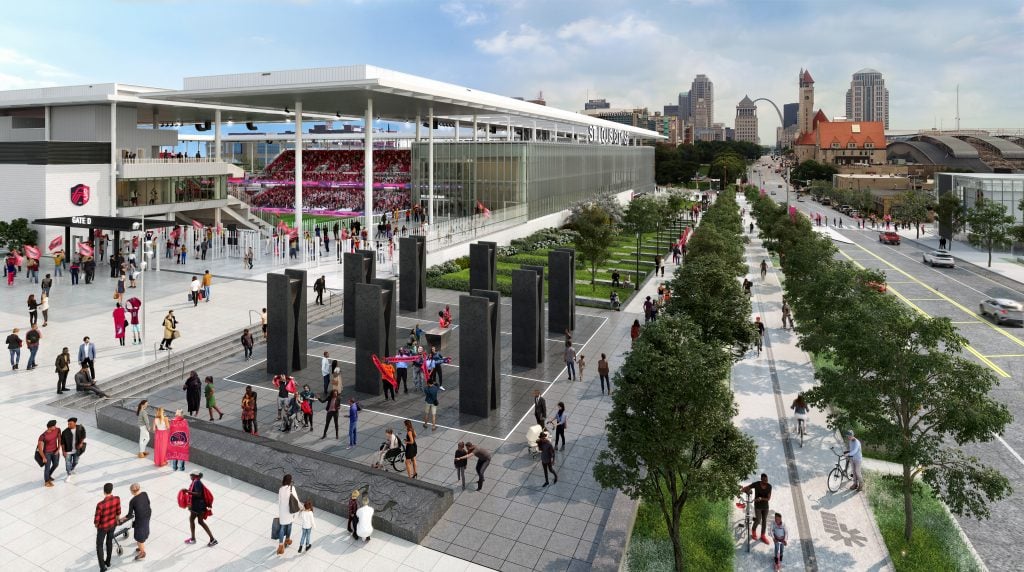
A rendering of Damon Davis’s Mill Creek Valley commemorative monuments. Courtesy of the artist, Great Rivers Greenway, and St. Louis CITY SC.
In a similar way, McAnally said, St. Louis extends far beyond its geographic borders in the cultural consciousness. “The questions that St. Louis faces are the questions of the moment,” he said. “These issues of public memory, of repair, of how you move forward with the weight of history.”
Allison Glenn, a former curator at the Crystal Bridges Museum of American Art in Arkansas, said an imprint of the city’s rich history can be felt in the present moment.
“I’ve enjoyed learning about, and calling upon, the connections between the ‘founding’ of St. Louis and the larger Louisiana purchase, which are intrinsically connected to real and problematic ideologies of Westward expansion that our nation is slowly confronting,” she noted.
Glenn, who will be working primarily with Adjaye, belongs to a curatorial collective that includes Risa Puleo, Creative Time associate curator Diya Vij, and the collectives Dream the Combine and New Red Order.
“The result is unique,” Vij said. “Instead of presenting a singular voice, we are offering a collection of responses to site and context through our own individual sensibilities and practices.”
“We’re interested in resisting the typical biennial and triennial approach of summing up a city,” McAnally added. “We wanted there to be multiple points of entry and exit.”
